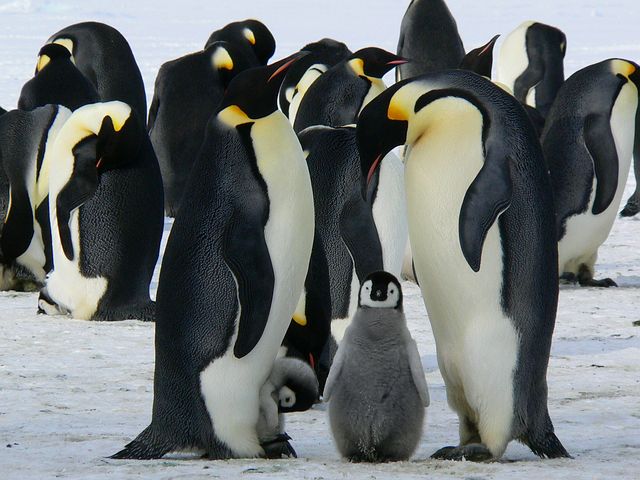
History
Their Latin name is Aptemoydes Forsteri, named after one of Captain Cook’s officers (Mr Forster), a German naturalist who may have been the first person to sight the Emperors. His other claim to fame is that he cooked his own dog when Cook fell ill with ‘the bilious colic’ and fed it to Cook in order to regain his strength.
Edward Wilson, an assistant surgeon on Robert Falcon Scott’s Antarctic ‘Discovery’ expedition in 1901, discovered the first-known breeding colony of Emperors on the sea ice at Cape Crozier, on Ross Island.
When Wilson returned to Antarctica with Scott’s Terra Nova expedition, in 1910, he and his two cvompanions, Apsley Cherry-Garrard, and Henry “Birdie” Bowers trekked 100 kilometres (62 miles) in winter in complete darkness in terrible conditions to reach the Emperor penguin breeding colony at Cape Crozier that he had sighted 10 years earlier. The Emperors only breed in winter and he Wilson wanted to get fresh eggs to examine.
It was an horrific trip but they managed to bring back three Emperor penguin eggs which today are on display in the Natural History Museum in London.

Breeding
They are the heaviest and tallest of all the penguins weighing between 22 and 45 kg and only live in Antarctica.
Only about one in ten emperor penguins are faithful to the same mate each year, the lowest fidelity rate of any penguin. They sing to attract potential mates and the male/ female ratio is 40/60 so you don’t really need to be a good singer if you are male.
It’s the only penguin that breeds during the Antarctic winter and that means it is really, really, really cold. The female lays one egg and the male looks after it by placing it in a brood pouch and balancing it on his feet while the female goes off to feed for the next two months.
The eggs can weigh half a kilo and one in ten is lost or displaced. The pores in the egg have to be large enough to allow the chick to breathe but not too many that they allow the dryness of the arctic air to leach out moisture from the egg. Their shells are some of the thickest in the bird world and make up about 15% of the weight of the egg.
The male fasts for two months while he incubates the egg and can lose half of its body weight standing in the cold before the chick hatches. The males all huddle together during this time and take turns at being on the outside of the circle where it is coldest. How’s that for altruism!!. The female returns after two months to feed the chick and then they both take turns at caring for it.
Emperor penguins have pebbles in their stomachs. No-one is sure why and they are most comfortable between -10° and -20° C. because within that range they don’t need to burn fat to generate heat.
A group of penguins in the water is called a raft, whereas a group ofpenguins on land is called a waddle. Cute. Penguins and other animals are one of the main reasons people visit Antarctica so may they live long and prosper. Generally they do with an adult yearly survival rate of 95% and an average life span of 20 years with some possibly living to fifty. Gopenguins.
